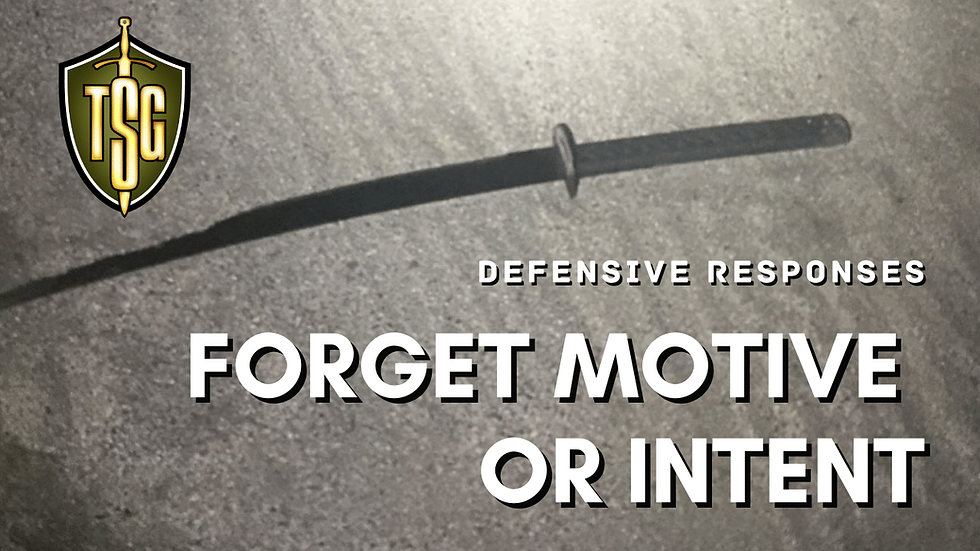Why We Can't Know Motive or Intent
- Brad Parker

- Oct 3, 2021
- 2 min read

We've all heard repeatedly about law-enforcement and investigative agencies trying to determine a motive to a crime or the intent of a subject.
However, it might be more instructive to forget trying to establish either of these during your defensive encounter.
Take a look at this paragraph from a story about an attack on some U.S. military personnel by a man dressed in a ninja costume wielding a katana.
Rivera, who was arrested after fleeing the airfield, now faces a litany of charges, including attempted homicide, assault with a deadly weapon, brandishing a weapon, brandishing a weapon with the intent to resist or prevent an arrest, vandalism and obstructing a peace officer in the discharge of their duties. His motive remains a mystery.
Of course his motive is a mystery! You can see the details of the bizarre story on the link above.
How on earth are we going to solve what reasons this guy had to act in such a weird way?
The point we need to think about is forgetting about how the attacker's "motive" or "intent" affects our responses. We should not be wasting time on applying rational thinking to irrational behavior.
The attacker's actions speak for themselves.
Those actions are what drive our responses to defend ourselves.
As a postscript, have you been training to defend against a sword? Against a machete?
Here's a hint: if you are training to defend against a club or bat, you can translate that training to into having at least something to do against a sword. If you are armed with a defensive handgun, you should be training to move to avoid the initial attack (get off the 'x') and use the amount of force necessary to change the attacker's actions.



Comments